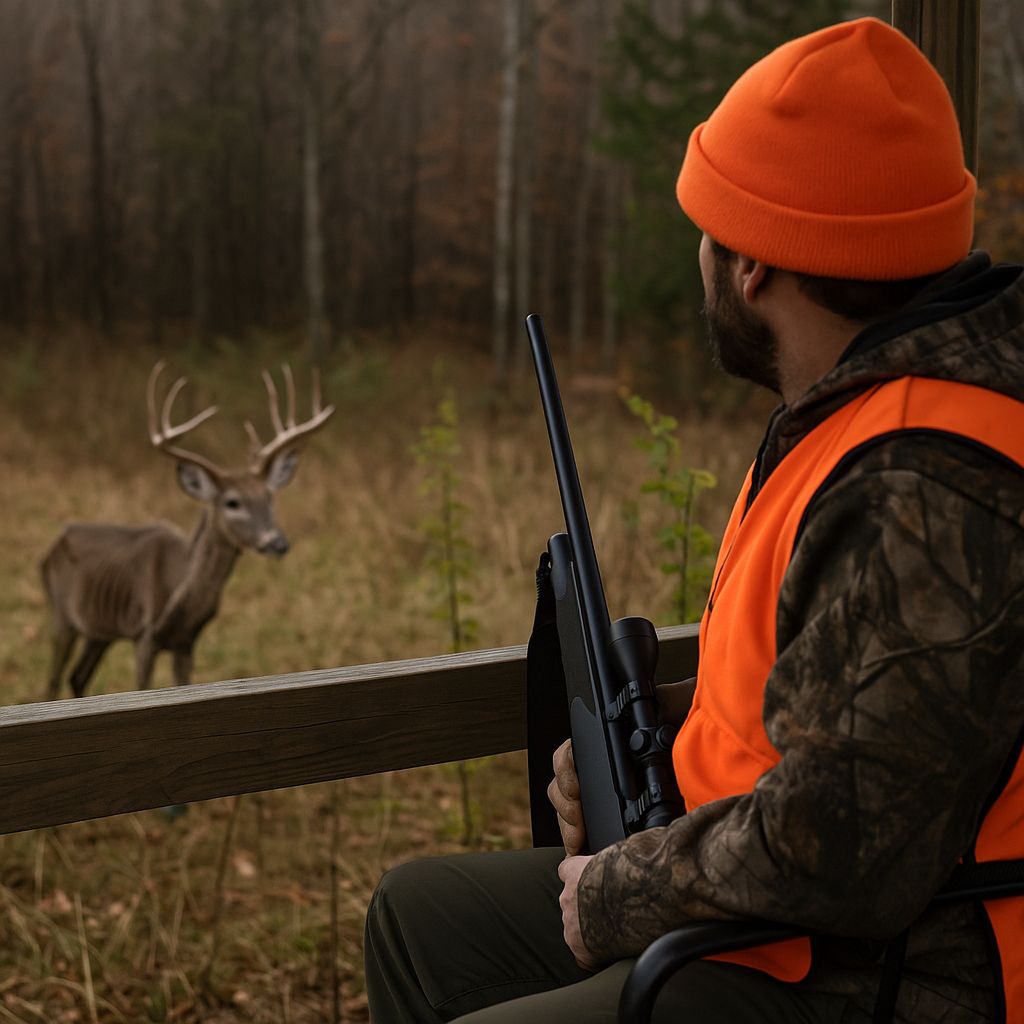- The Kentucky Dude
- Posts
- Oh Shit, The CWD Outbreak is in Kentucky
Oh Shit, The CWD Outbreak is in Kentucky

Oh Shit, The CWD Outbreak in Kentucky
Last fall, Kentucky got its first wake-up call.
A captive deer at a farm in Breckinridge County tested positive for CWD (Chronic Wasting Disease).
That is not just a farm problem. It is a flashing red light for all of us who hunt and treat deer season like a second Christmas (fw.ky.gov).
If you are scratching your head, wondering what this is all about, here's the explanation in plain and simple terms.
Kentucky is now part of the national fight against Chronic Wasting Disease. There is no cure. There is no vaccine. Once it joins a wild herd, it kills.
What is CWD and where are we now in Kentucky
CWD is a disease caused by a misfolded protein called a prion. It attacks the nervous system of deer and elk, and it is always fatal.
It spreads through body fluids, tissues, and even the soil where a sick deer once stood. That means you cannot just hose down a field and be done with it.
Kentucky has been watching our borders for years because CWD has been in neighboring states. In 2023, we got our first confirmed case in a wild deer in Ballard County (cidrap.umn.edu). In 2024, a captive deer in Breckinridge County tested positive (kyagr.com). By mid-2025, eight more positive cases were confirmed at the same facility.
The state responded by creating surveillance zones in multiple counties.
These zones impose stricter rules regarding the movement of carcasses, baiting, and even how we check deer during the season (fw.ky.gov).
Hunters in these areas are now required to drop samples at check stations or process their deer before leaving the zone (cidrap.umn.edu).
So yes, Kentucky is officially in the fight.
How does this change the deer season
This is not just a science issue. It changes how we hunt, how we process deer, and how we feel about venison.
Rules and Harvest
Carcass transport rules now mean you cannot haul a whole deer across county lines from a surveillance zone (fw.ky.gov).You can bring out deboned meat, clean skulls, hides, and antlers, but not a full carcass.
Feeders that put multiple deer nose to nose are also banned in the zones (fw.ky.gov).
On opening days in some counties, hunters will be required to check deer at sample stations (cidrap.umn.edu)
Population and Pressure
In other states, CWD has led to a reduction in deer numbers. Bucks get weaker. Fewer mature deer survive the years.
That could become Kentucky’s reality if we do not act now. The Breckinridge deer farm already had to destroy over a hundred animals (kentuckylantern.com). That is a shock to both the economy and the gene pool.
Hunter Confidence
There is also a trust issue. Some hunters are already wondering if their venison is safe to eat. Others are questioning whether to hunt in the zones at all.
What hunters MUST do
This is where we need to take things seriously. Hunters, landowners, lawmakers. Everybody has a role.
Stronger Rules for Deer Farms: More stringent standards for fencing, the movement of live deer, and new farm applications.
More Testing and Surveillance: More drop-off stations, more random testing, and better tools for early detection, along with incentives for hunters to get deer tested will help, too.
Hunter Education: Teach and remind folks how to field dress safely, what parts can be moved, and why it matters.
Policy and Funding: State and federal government should put real dollars behind testing and research. That means grants, legislation, and enforcement that match the size of the threat.
This is not going away. We can either treat it like somebody else’s problem until it wipes out our herds, or we can face it head-on.
If you are in a surveillance zone, follow the rules and get your deer tested (fw.ky.gov). If you are outside the zone, stay alert and support the efforts. If you love deer hunting in Kentucky the way I do, then this is our fight.
The beauty of hunting is not just in the harvest. It is in protecting the woods and the wildlife, so our kids and grandkids get the same chance we had. Chronic Wasting Disease threatens that. It is now time for us to step up.